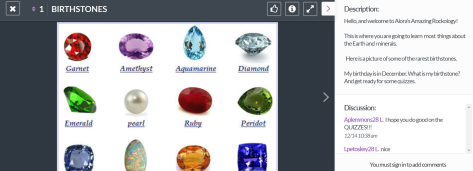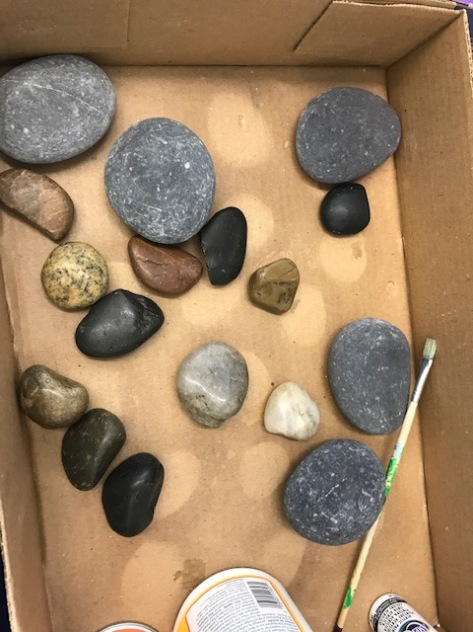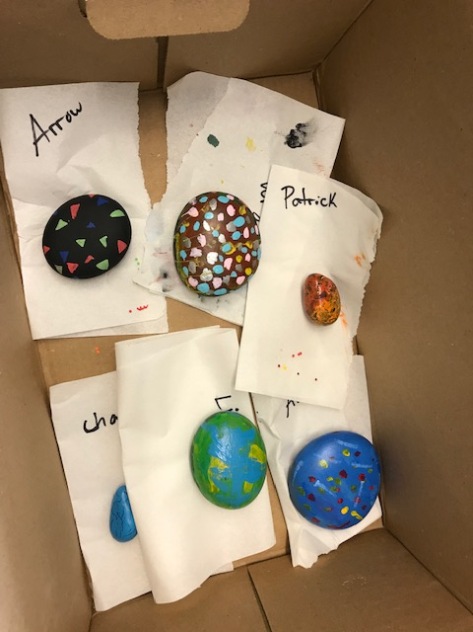
We’ve been building excitement for weeks to get ready for an author/illustrator visit with Lincoln Peirce. Many people know Lincoln from his bestselling series Big Nate, but he has an equally fantastic new book out called Max and the Midknights. This new book is a spoof on the Sword in the Stone and other medieval stories. It is filled with surprises, adventure, a wicked king, an evil sorceress, unlikely knights, a dragon, a few zombies, and plenty of humor. (And the best part is that there are more Max books in the works).
Prior to Lincoln’s visit with 3rd-5th grade, we held a one-page comic contest and used those comics to fill our windows of the media center to welcome him. When he arrived, he was so impressed by how many of our students expressed their creativity through comic art.

Lincoln arrived a little bit early so he took time to sign the many books that we pre-sold through our local independent bookstore, Avid Bookshop. He also had one adoring fan spending recess time in the library, and Lincoln took time to chat with this student who has read all of the Big Nate comics. This student even drew a comic for Lincoln using Big Nate and his other favorite topic, the Titanic.

Before his chat with all of the students, Lincoln had just enough time to create a special Max drawing for our library. I’ve made it a habit now of framing an illustration from each illustrator who visits and is willing to leave behind an image. With 3 author/illustrator visits just this year, our walls are becoming a mini-museum.
A few lucky students arrived early and got to see Lincoln create the drawing.
In his presentation, he of course acknowledged Big Nate at the beginning because that’s what he’s famous for. I loved how when he showed each character from Big Nate, the kids shouted out their names. These illustrated novels have made quite an impact on many readers.
Lincoln then backed up and showed us where a lot of his inspiration has come from. He referenced books he read as a kid and many comics that inspired him. I’m always impressed when an author/illustrator shows things that they kept from their childhood, and it reminds me the importance of holding on to at least a few things from my own children each year. He had drawings of Peanuts characters that he created and super heroes based on his love of Batman.
Lincoln took students up to the point where he created the Big Nate comic strip for newspapers and how it became wildly popular. We were all surprised when an image of another famous author made its way into Lincoln’s presentation because Jeff Kinney was a key player in how the comic strip turned into an illustrated novel series.
It was very evident that Lincoln has had a lot of fun moving away from the Big Nate novels to a new series. He’s coming up with so many new, fun characters that are based in medieval tales he’s read or watched in the past. Students loved seeing how he took some small ideas and eventually turned them into a much longer story. He introduced them to all of these key players in the book without giving away any of the fun secrets from the book.

One of the most fun parts of Lincoln’s presentation was seeing him draw. He emphasized to students that the smallest lines and symbols convey big messages to the reader. A simple letter z tells you someone is sleeping. A slanted eyebrow can change a character’s emotion.

He drew one character on our whiteboard and then erased and drew over and over to show how small changes can make a big difference in the message you are sending to the reader. This was so helpful to our young artists and I can’t wait to see how this impacts the images, comics, and stories that they create.

After Lincoln’s visit, we rushed all of the signed copies to classrooms. Students immediately started opening them up to read. Students came in the next day buzzing about what they had read.

Our 6 copies of Max and the Midknights immediately got checked out and a “hold” list started to develop throughout the day. Every signed copy of Big Nate was also checked out right away. I started to get messages from parents whose kids came home and wouldn’t stop reading the book and stories of kids who went home and made their own comics. I heard stories from teachers who had students begging to have the book read aloud in class or to the be the first student to read the class copy of the book.
This is what an author visit does. It inspires students to create. It creates a buzz of conversation. It encourages readers to read and readers who haven’t found the right book yet try something new. Thank you to all publishers who send authors and illustrators to schools and bookstores. For this visit, thank you to Random House Kids & Crown Books for Young Readers for sending Lincoln Peirce to our school. Thank you to Avid Bookshop for advocating for this visit and for taking care of all of our presales of books. Finally, thank you to our amazing PTA who made sure every class in 2nd-5th grade received a copy of Max and the Midknights for their class library. These books will make an impact for years to come.
 I’ve been working with a group of 3rd graders to find books that interest them. I recently wrote about how we took a survey to help me find books that might match the students as readers. Now that this group of students have been reading their books and moving on to others for a few weeks, we are talking more about what readers do while they are reading.
I’ve been working with a group of 3rd graders to find books that interest them. I recently wrote about how we took a survey to help me find books that might match the students as readers. Now that this group of students have been reading their books and moving on to others for a few weeks, we are talking more about what readers do while they are reading.




















































































































